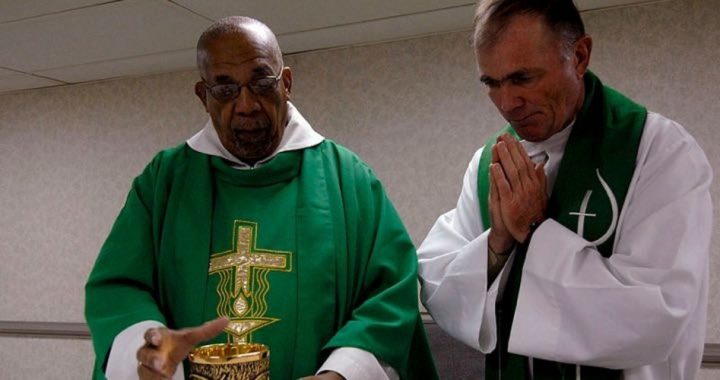
Anger, shock, and dismay over the latest sex-abuse scandals in their church are plaguing Catholics worldwide as they await a definitive statement from Pope Francis regarding allegations that the Vatican has helped cover up for abusive prelates. Meanwhile many blame the tradition of priestly celibacy for causing the sexual abuse of minors. The New York Times recently surveyed Catholics and former Catholics for their opinions. “Singular devotion to God via celibacy doesn’t seem to work with natural desire for sex by men,” wrote a female respondent from San Francisco. “Let’s move the church past vows of celibacy and refocus on faith, prayer, healing and good works.”
“The isolated and repressed nature of a celibate life inevitably stunts one’s ability to fully develop the normal range of human emotion,” postulated a man from Miami. “End celibacy and promote a clergy that embodies a healthy notion of human sexuality.”
This popular but unsubstantiated critique, oft repeated in the wake of sexual scandals involving Catholic priests, seems to follow the illogic that by forcing a man to lead a chaste lifestyle, the church is setting him up to abuse minors. Supposedly, if priests were allowed to marry, they would not have to resort to statutory rape and child molestation.
Such flawed judgment doesn’t hold up against an abundance of data to the contrary. The Children’s Assessment Center, a non-profit child advocacy group in Houston, Texas, offers a Child Sexual Abuse Facts page on its website, outlining results from volumes of government and independent research on abuse in general, outside of Catholic circles. While it is true that children who live with both biological parents are at the lowest risk of abuse, those who live with a single parent who has a live-in partner are 20 times more likely to become victims. The risk is also elevated for foster children and kids with single parents or a parent and step-parent. Clearly, marriage alone is not the solution for ending sexual exploitation of minors.
Furthermore, most sexual abuse by Catholic priests has been against boys and young men, as reported by The New American. Church leaders agree there is an obvious and even well-known undercurrent of homosexuality driving most of these abuse cases. Traditional marriage as defined by the Catholic Church — between a man and a woman — is not the remedy that springs to mind.
It certainly hasn’t stemmed the tide of abuse in other religious organizations plagued by sex scandals. Liberty University law professor Basyle Tchividjian, a grandson of the late Southern Baptist minister Billy Graham, founded the non-profit organization GRACE (Godly Response to Abuse in the Christian Environment) in 2003. Tchividjian has served the State of Florida as the chief prosecutor in the Sexual Crimes Division and also worked as attorney for the Child Advocacy Center in Daytona Beach. He believes that the problem of child sexual assault in evangelical circles rivals that in the Catholic Church. In fact, he told a 2013 Religion Newswriters Association conference, “I think we are worse.” Yet Protestant ministers are not bound by vows of celibacy and are permitted to marry.
As for pedophilia specifically, ending mandatory priestly celibacy in the Catholic Church would do nothing to stop predator priests. In the general population, “the majority of the men who molest boys are also married, divorced, widowed, or living with an adult partner,” as documented in The Stop Child Molestation Book by Gene Abel, M.D. This is because pedophilia is not just about satisfying lustful desires; the American Psychiatric Association defines pedophilia as a psychiatric disorder involving sexual attraction to prepubescent children. Obviously, marriage is not a “cure” for perversion.
Moreover, when the United States Conference of Catholic Bishops hired New York’s John Jay Institute to uncover The Causes and Context of Sexual Abuse of Minors by Catholic Priests in the United States, 1950-2010, researchers quickly acquitted the issue of celibacy. “Celibacy has been constant in the Catholic Church since the eleventh century,” noted the authors, “and could not account for the rise and subsequent decline of abuse cases from the 1960s through the 1980s,” which they found coincided precisely with the larger “sexual revolution” plaguing society in the 1960s and 1970s.
A further interesting defense of clerical celibacy comes out of pioneer days in the American West and is chronicled in a book entitled The Life of Father De Smet, S.J., Apostle of the Rocky Mountains by Fr. E. Laveille, S.J. It tells the story of native American tribes such as the Sioux, the Blackfeet, and the Flathead, who preferred Catholic “Black Robes” as they called priests, specifically because they were unmarried and could therefore devote all their time and energy to sacred work.
“What had they to do,” asked the Indians, “with married preachers, men who wore no crucifix, and said no rosary?” They wanted only the Black Robes to teach them how to serve God. They even went so far as to appeal to the President of the United States, asking that the married ministers might be recalled and Catholic priests sent in their place…. Such elevated, upright souls could, moreover, appreciate the chastity of the Catholic priesthood. With rare discernment, the Indian understood that, belonging as he does to all men, a priest cannot give himself to one person, and not for an instant did they hesitate to choose the Black Robe, who had consecrated his life to them, rather than the minister in lay dress, installed in a comfortable home with wife and children, devoted to the interests of his family, giving only the time that remained to distributing Bibles.
Photo: U.S. Navy




